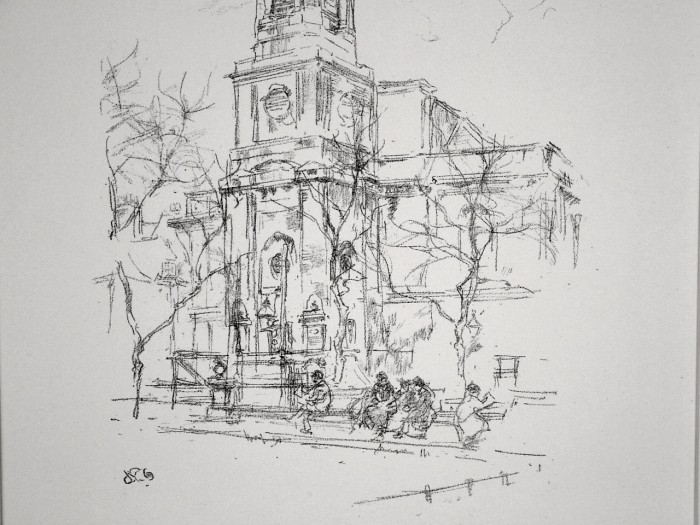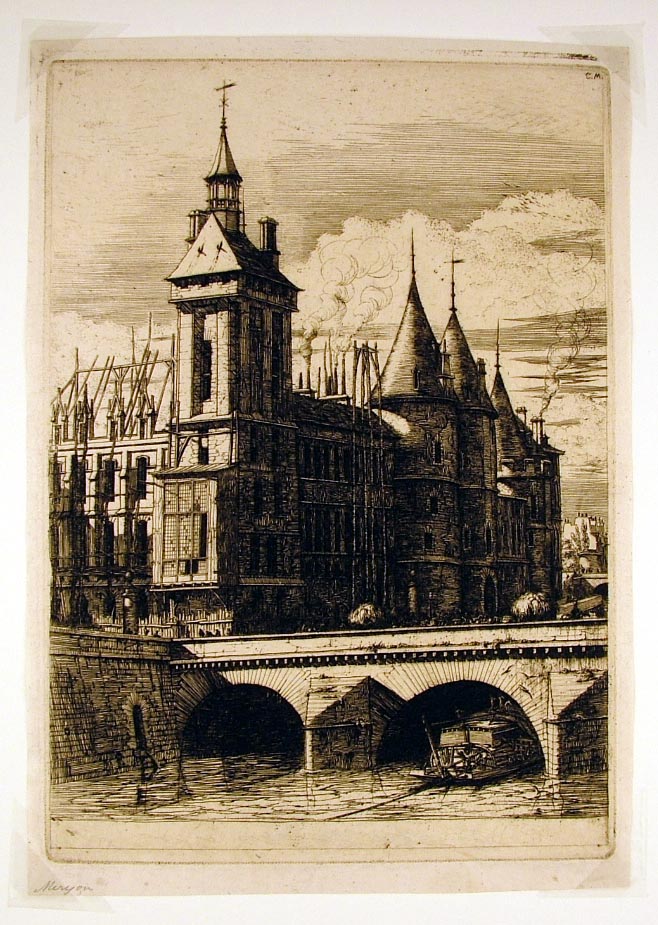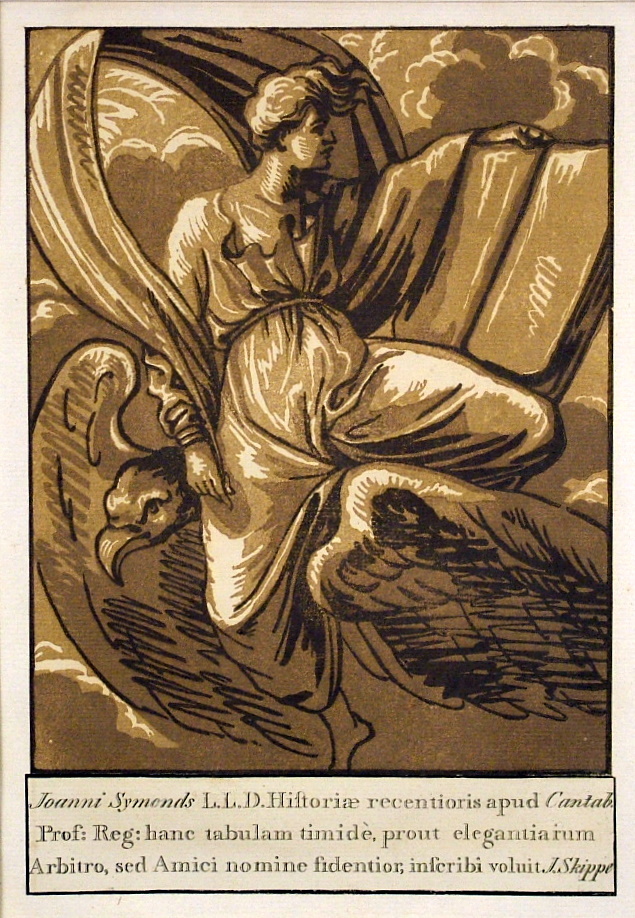St. Anne’s, Soho
Thursday, May 28th, 2009James Abbott McNeill Whistler (1834-1903), St. Anne’s, Soho, lithograph, 1896, [signed with the butterfly in the plate], Reference: Chicago (Spink et al) 162. Inscribed in pencil recto: F Goulding from R. Birnie Philip. In very good condition, the full sheet, 5 1/8 x 7 1/2, the sheet 14 3/4 x 10 inches.
A fine impression, printed on a cream laid paper with the watermark OWP & AOL, Fink watermark 219, listed as characteristic of the posthumous edition printed by Goulding in 1904 (edition of 48; lifetime edition of 23).
The inscription F. Goulding from R. Birnie Philip is somewhat curious: Frederick Goulding was the master printer asked by R. Birnie Philip (Whistler’s sister-in-law) to print small editions of the lithographs in 1904. This print also has the initials in pencil FG in a circular design, which we believe is Goulding’s mark (not located in Lugt).
This impression is in a Childs Gallery (Boston) mat; the print is stamped Childs Gallery verso, as well as on the mat (the mat also contains their cataloguing notes).
Whistler was working on views of the Thames in 1896; he planned a series of lithographic subjects, but completed only two, of which St. Anne’s was the first. St. Anne’s was bombed in WWII, and today only it’s yellow brick tower, outer walls, and garden survive. TR Way described the building as “one of the most unattractive buildings in London” in his early catalogue. But Elizabeth Pennell described the setting as a quiet and quaint place for the tired population of Soho to relax, in benches under the trees – as depicted by Whistler in the lithograph.
$2500



 Charles Meryon (1821-1868), La Tour de L’Horloge (The Clock Tower, Paris), 1852, etching with engraving. Reference: Schneiderman 23, Delteil 28. Third state (of 10). On very thin Japan paper. 10 1/4 x 7 1/4 inches. Archival mounting (non-attached mylar hinging between acid free board, glassine cover).
Charles Meryon (1821-1868), La Tour de L’Horloge (The Clock Tower, Paris), 1852, etching with engraving. Reference: Schneiderman 23, Delteil 28. Third state (of 10). On very thin Japan paper. 10 1/4 x 7 1/4 inches. Archival mounting (non-attached mylar hinging between acid free board, glassine cover).
